Public Works
Herman Wald did many large scale public works in South Africa. Broadly they fall into the categories:
- Memorials to Ernest Oppenheimer
- Holocaust Memorials
- Commercial Works
- Synagogue Elements
- University of the Witwatersrand Works
Stampede
Johannesburg City (1960 – Bronze – 7.5m wide)
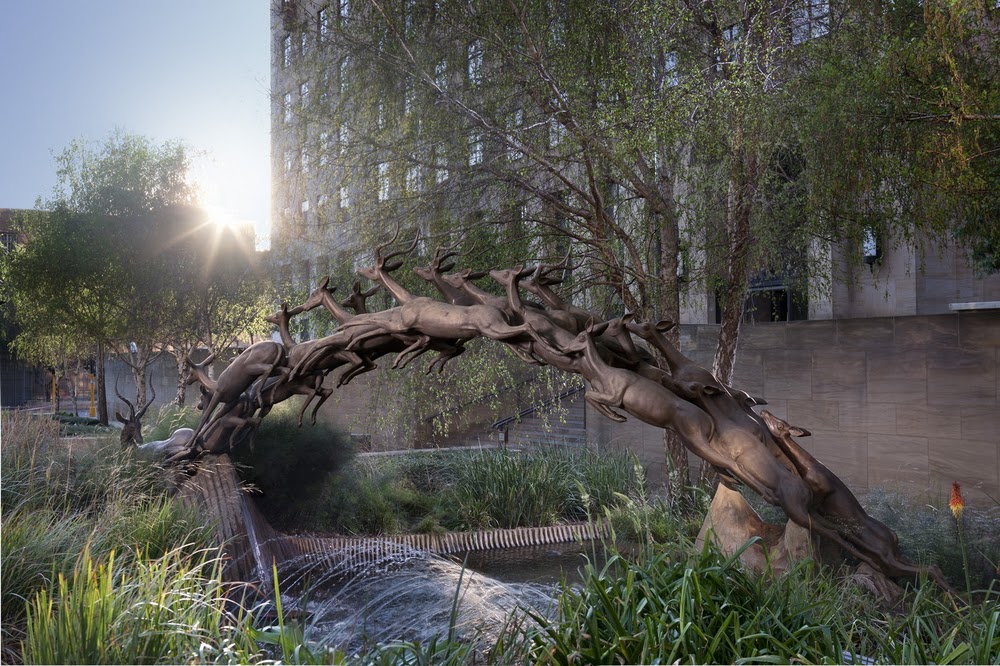
"The Stampede was my first impression in this country, nature’s most graceful
charge that competes with any man-made efforts, unconditionally acclaimed by
child or adult, by amateur or connoisseur, unbound by time, fashion or ‘isms’." (H.Wald)
The Stampede or the Impala Fountain is probably Johannesburg's most well known art work.
It was commissioned by Harry Oppenheimer of De Beers in memory of his father Ernest and donated to the City of Johannesburg.
After having being vandalized it was restored by Herman Wald's son Michael and reinstated
at a new location at 45 Main Street Johannesburg in 2002. Over the years innumerable images of
the work have appeared in tourist brochures, postcards and newspaper articles and cartoons.

Memorial to the Six Million
Westpark Cemetery Johannesburg (1959 - Bronze - 5.1m high)
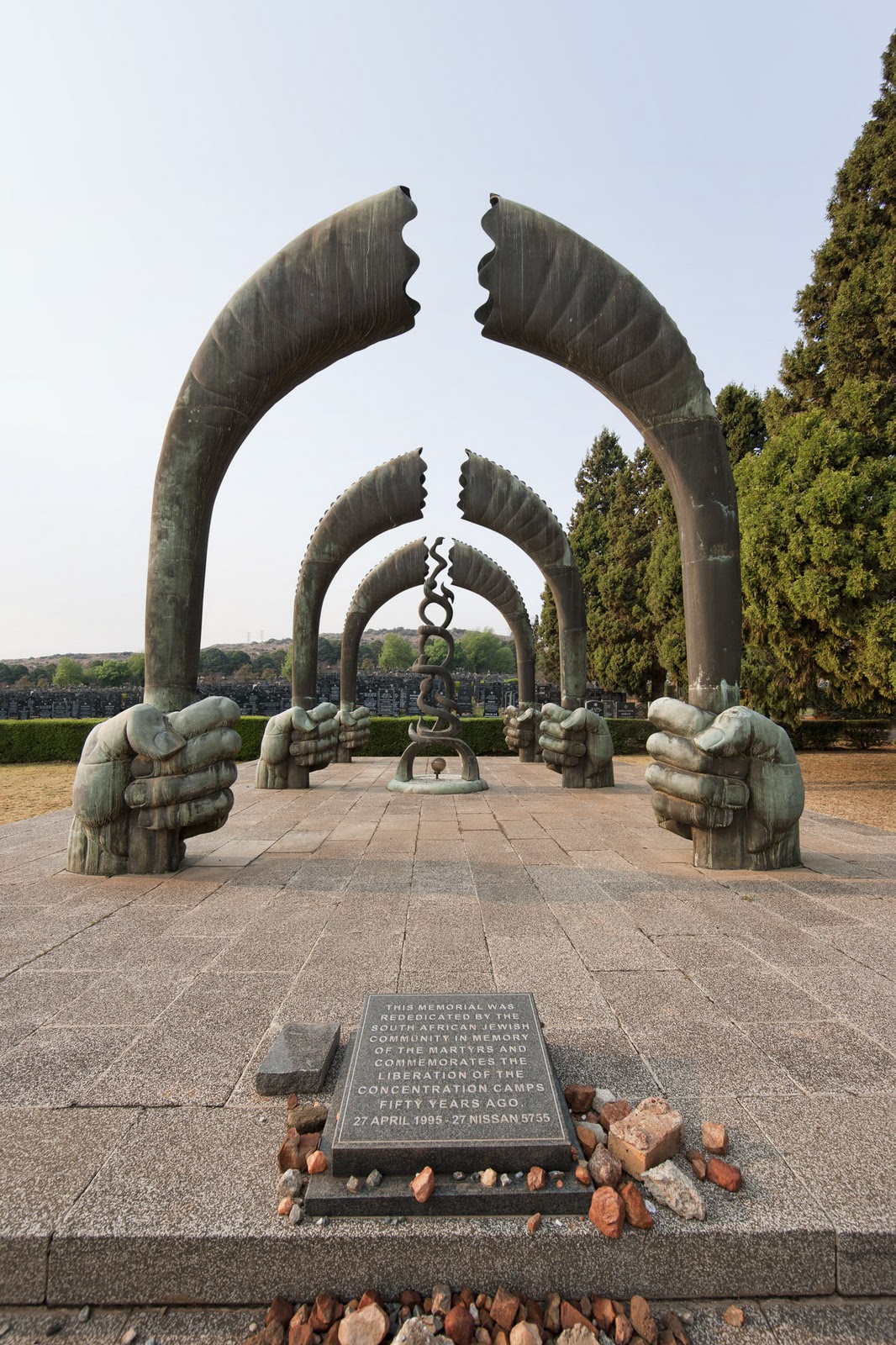
"This monument depicts six mighty bronze fists, each five feet high, bursting out of the ground as a
protest of the dead, each fist representing one million Jews who perished under Hitler, and each gripping a ram's
horn, the Jewish ritual trumpet standing twenty feet high. In pairs they create three arches; the arches of trials
and tribulations that the Jewish people have all gone through during all the generations of persecution.
In the centre there is a flame shaped Eternal Light, spiralling fifteen feet up. Through the ram's horns the Dead are
blasting out the Sixth Commandment: 'Though shalt not kill', while the centre eternal light is stylized through the
medium of the Hebrew lettering, to form a flame which spells in Hebrew 'Lo Tirtzach (thou Shalt Not Kill)'." (H.Wald)
This is a highly significant landmark for the Jewish community in South Africa.
Each year the Remembrance to the Six Million ceremony is held at the monument with the base
serving as the platform for the speakers and choir. The photographs below were taken in April 2009.
The first shows the scale of the hands and the second an indication of the number of people that
attend the event.
The Diamond Diggers
Kimberly (1960 – Bronze – 1½ life)

Also commissioned by Harry Oppenheimer of De Beers in memory of his father Ernest.
Kimberly diamond mines launched De Beers in the 1870’s. The work described was in the press
as a tribute to the men who pioneered the diamond industry.
Kria
Sandringham Gardens Johannesburg (1946 – Bronze, twice life size)
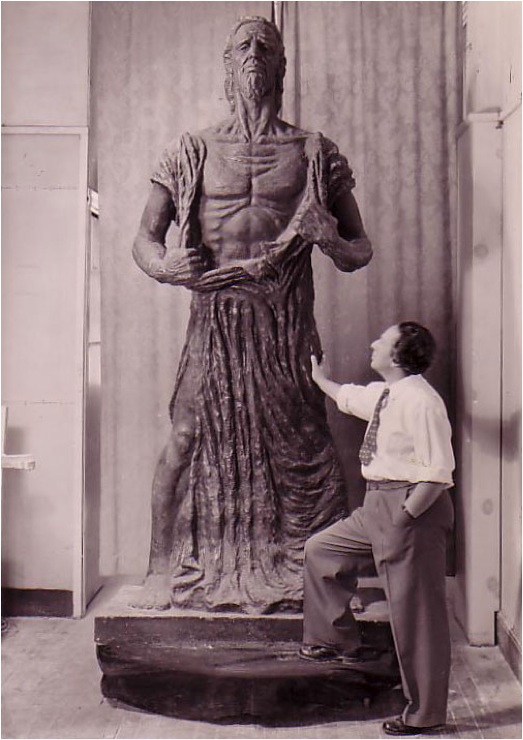
The work stands at the entrance to the main building at Sandringham Gardens - the centre for care of the Jewish elderly.
"'Kria', meaning the rending of garments, is a symbol of Jewish mourning,
originating from biblical days and still practiced today. The figure represents
the present day Jewish people in defiance of it's enemies, yet with dignified
hope and feet firmly planted on the ground saying 'I am here to stay on earth',
which is the birthright of any man, Jew or any other race." (H.Wald)
Protector
Johannesburg (1967 – Bronze – twice life)

Commissioned by the Old Mutual Building Society for its Saint Mary’s Arcade
building in Joubert Street.
Unity is Strength
Johannesburg (1969 – Bronze – 1½ Life size)
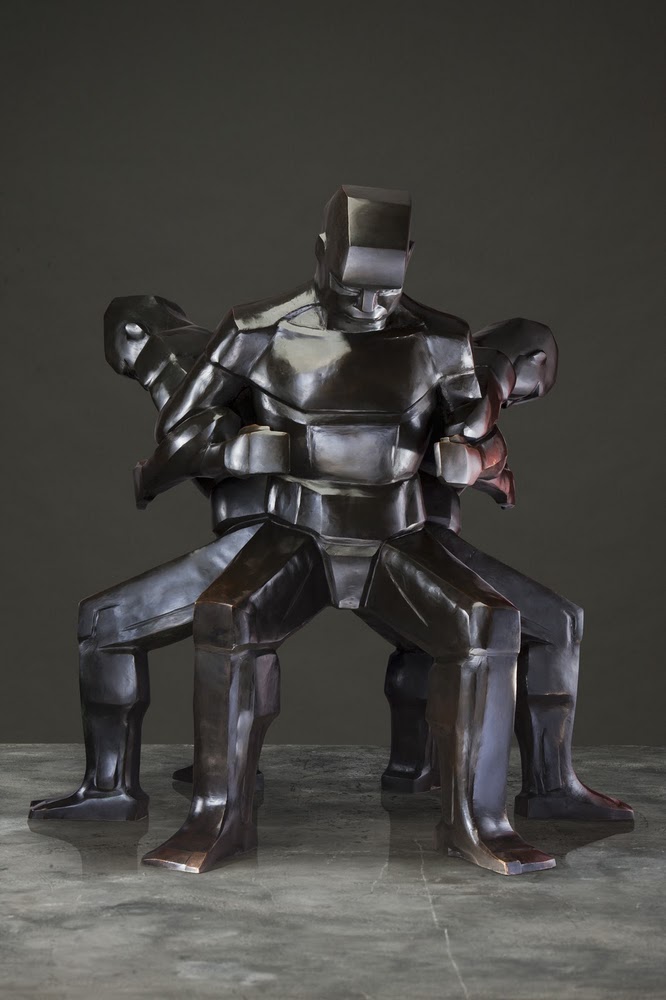
Originally commissioned by the United Building Society. Now at the Absa
building in Main St Johannesburg. The use of emphatically varied facial feature
types was a strong plea for unity amongst and equality for all South Africans.
Sanctum
Springs Synagogue (1951 – Kiaat Wood - 8.5m wide)
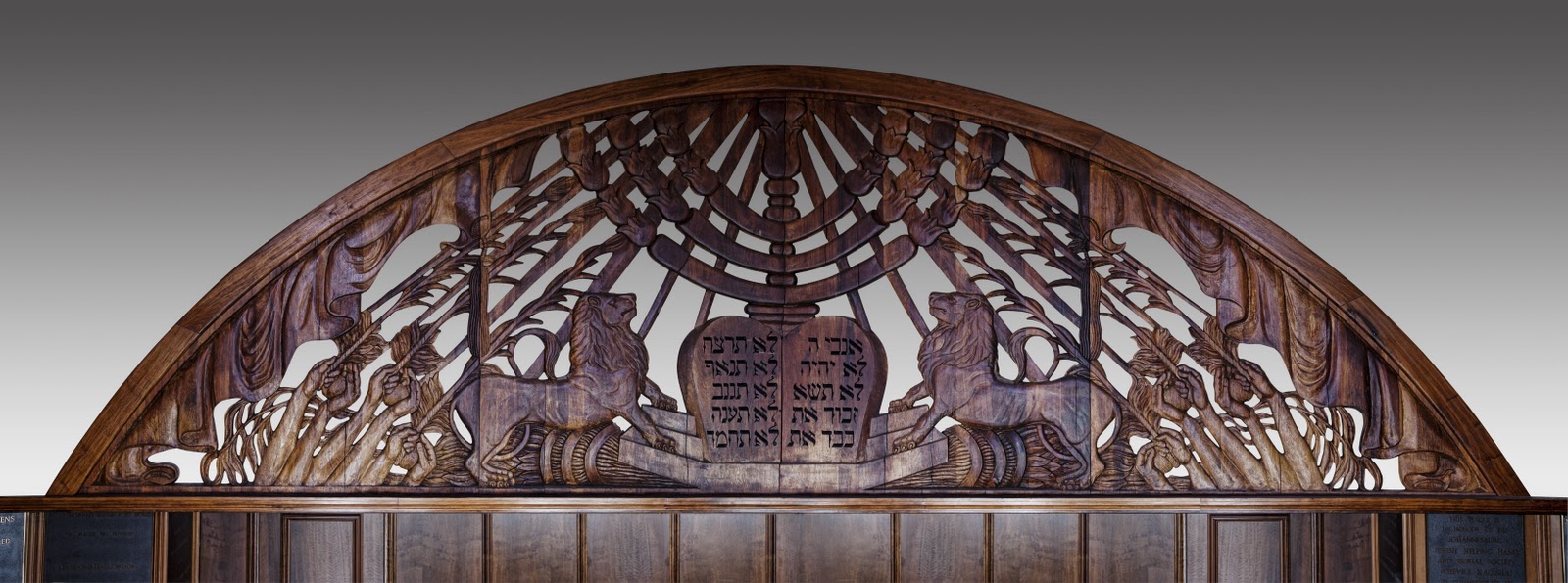
The arched perforated wood panel screens the elevated choir room from the synagogue.
"In a way I have also fulfilled a childhood ambition for I remember as a choirboy
I carved my name into the back or the grille in our shul and now I have the honor to carve the front.
There is the Chassidic devotion of orthodox Jewish hands offering their prayer in traditional manner.
Another motif is the Menorah coming from the time of Titus the Conqueror. Then there are the ten
commandments at the foundation.
The entire composition is embraced by the tallis which symbolizes the four corners of the
world. "Metaphorically the Lulaf give the impression of lighting the Menorah with the
flame of their devotion"". (H.Wald)
Wings of the Shechinah
Berea Synagogue Johannesburg (1967 - Copper – 6m high)

The gleaming copper wings frame the 'Aron Kodesh', the marble framed cabinet which houses the torah scrolls
and is at the focal point of the synagogue.
"When I was approached to design the main wall of the Berea Synagogue. I felt that l was
faced with a number of problems. It is no simple matter to reconstruct a conception derived from
Biblical days, when the Covenant was carried in the desert. One of the greatest artists of them
all from antiquity was approached to make a carriage for the Covenant. His name was Bezalel who
did the carving of the Cherubim in which the Covenant was carried. I have attempted to reinterpret
the conception that Bezalel used.
I had to take into account that the Law forbids the use of living figures in sculpture,
so I could only use the non-figurative part of the Cherubim theme - namely, wings to
embrace the Ark in which the Law is carried. On the tip of the wings will be inscribed,
the essence of it all, the Ten Commandments, as if floating in air. The aim is to give
the impression that the message they carry is floating across the whole world.
The chains which form the background of the Aron Hakodesh symbolize the continuity
and strength of the Jewish nation - the Golden Chain as it is known in Jewish lore." (H.Wald)
Man and his Soul
University of the Witwatersrand (2011 - Bronze – 2.5m high)

This 2.5m high version of Man and his Soul was erected in November 2011. See here. It was donated
to the University of Witwatersrand who paid for the production costs.
Michael and Louis Wald managed the prodcution process. It was scanned electronically then
cut out in foam using a milling machine then cast into bronze.
The human figures are the embodiment of the spiritual essence. Wald stated that ‘this conception tried to depict the
vicious circle between Life and Death, running with such uncountable centrifugal speed that could take Man an eternity to catch up with
its secret. This is the reason the half moon shapes chase each other with the ethereal speed of light’. The bodies are abstracted from
the sensual by means of an attenuation of the forms, which exaggerates the natural proportions of the heads, legs and arms.
Simplicity and delicacy are the defining components of the flowing design of this sculpture. (Andrea Lewis)
The Unknown Miner
University of the Witwatersrand (2011 - Bronze – 3.0m high)

This cast was made in 2011 and erected in November. See here. It was donated to the University of Witwatersrand
Engineering Faculty who paid for the production costs. Michael and Louis Wald managed the prodcution process.
The Unknown Miner is a casting of the original prototype of the five
miners and stands at the east entrance of the newly renovated Chamber
of Mines building that partially houses the Faculty of Engineering and the
Built Environment. The portico entrance presents a striking view of the
three-meter bronze sculpture to all who enter the building and is a fitting
introduction to the new domed interior atrium.
The dark bronze provides a dramatic silhouette highlighted against the sun
when one leaves the building. The outstretched arms and muscular rippling
of the body provide a reminder of the important contribution of the mining
industry and mining education to the economy of the country. The mining
boots stand firm in the concrete and give ballast to the slight twist in the
torso. Although The Unknown Miner has some characteristics of social
realism, the work contains symbolic elements paying tribute to many unsung
heroes. These men and women, from diverse backgrounds and cultures,
laboured and sacrificed to create the mining industry and to establish
Johannesburg as the ‘City of Gold’ from 1886.. (Katherine Munro and Natalie Knight)